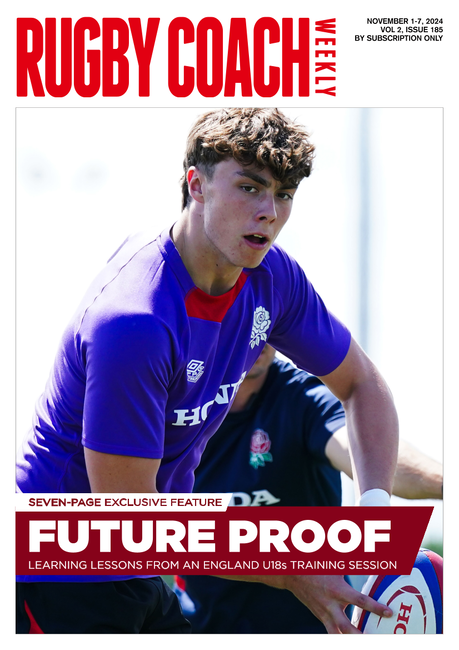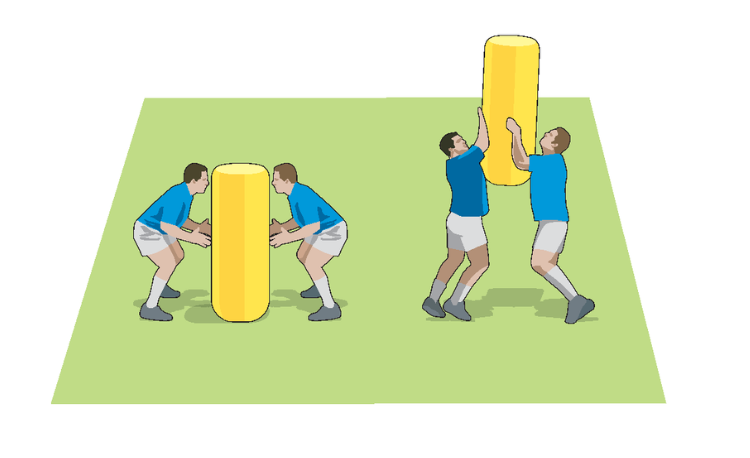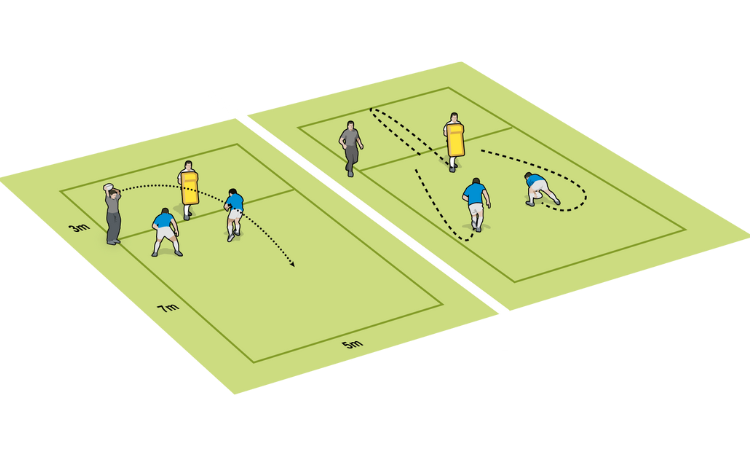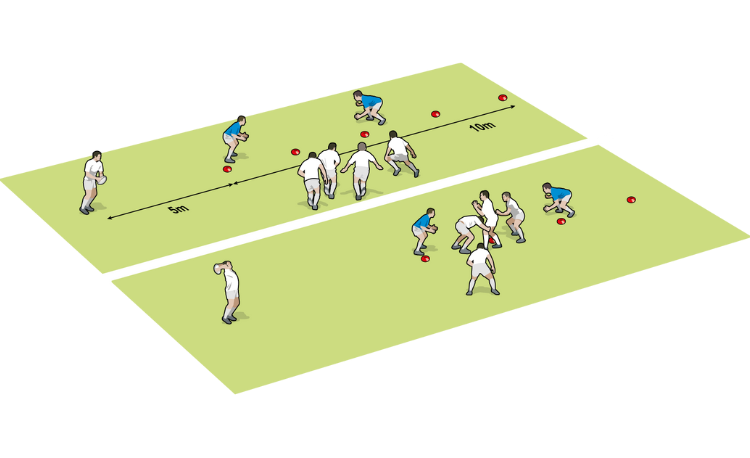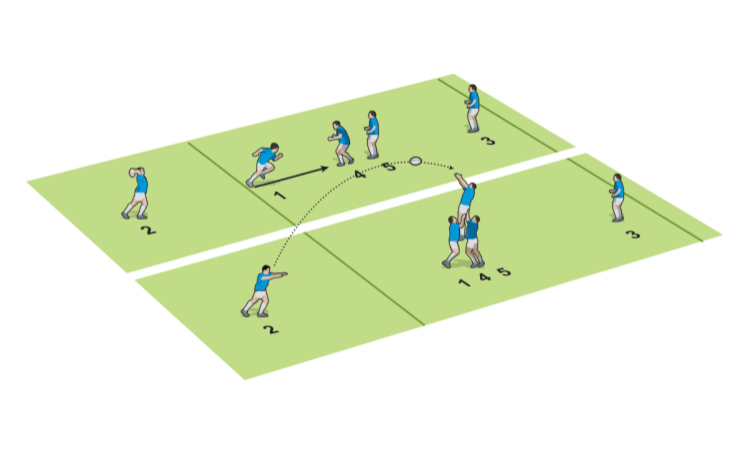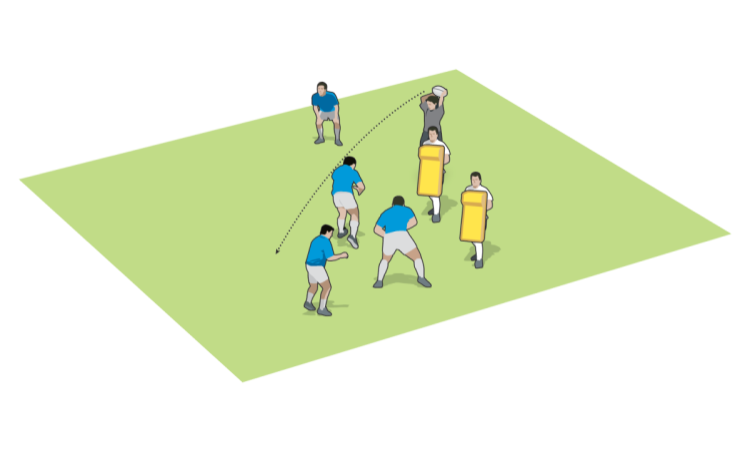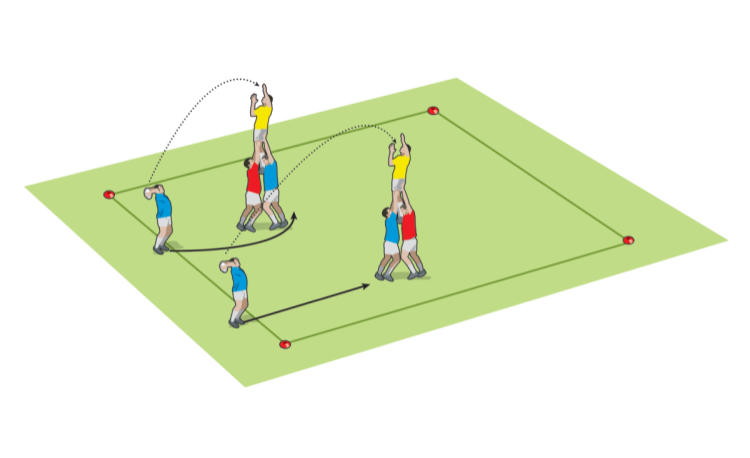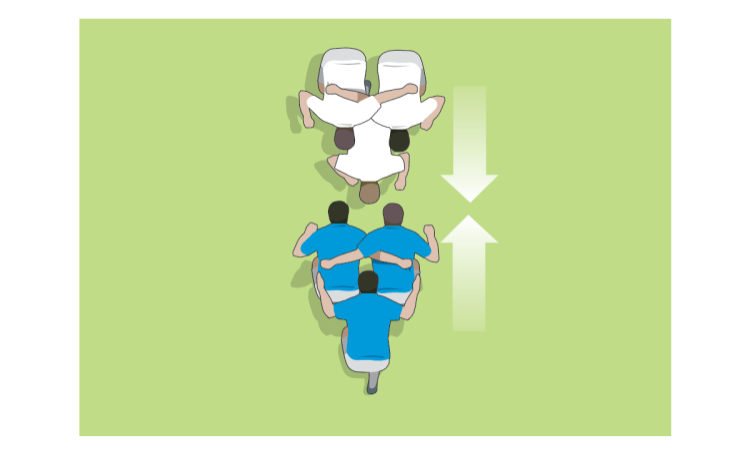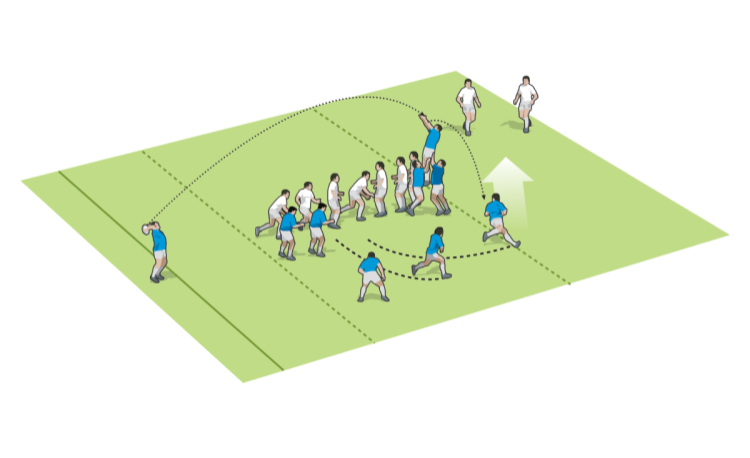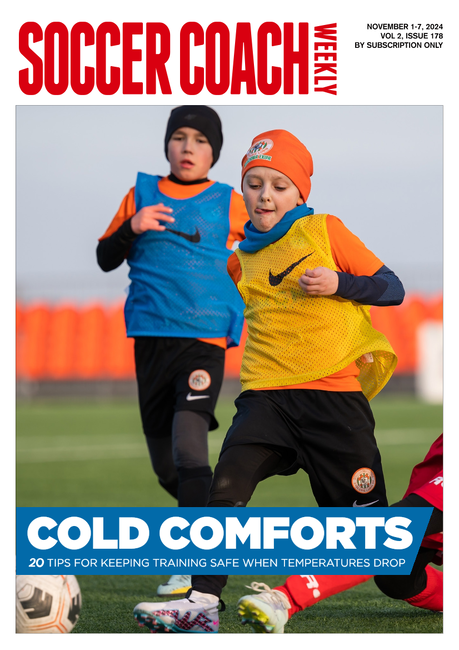Feet and leg positioning in a rugby scrum
Good feet and legs
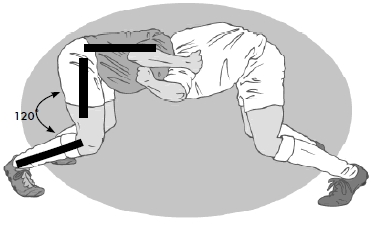
On engagement, the hips of both players are above the knees, as in the picture above. Thighs are straight, feet are pointing forward, and players are on the balls of their feet.
Some coaching text books say that there is some evidence that an angle of 120 degrees for the leg bend is best for applying the most force at impact.
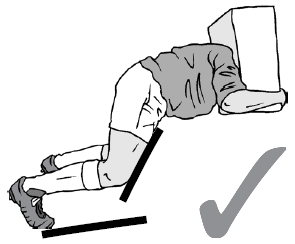
After the initial shove, the hips have moved forward and are at an angle, but there is still some flex in the legs, as in the picture above. Remember to keep stepping, so knees are beneath hips after the initial engagement.
Bad feet and legs
Check your players for signs of “bad” feet and legs.
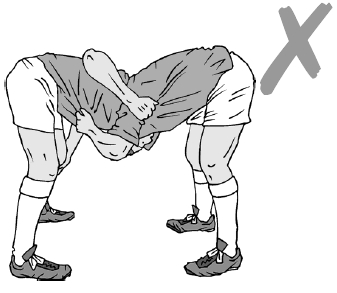
The picture above is an example of a bad driving position.
Legs are virtually straight, hips are higher than shoulders, and feet are neutral – there is no flex for a shove. Also note that the binding of the right hand player shows him pulling the other down.
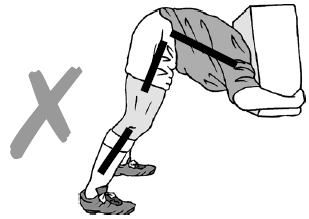
This picture above again shows poor positioning. There is still no flex in the legs and feet are flat.
This article is from the Secrets of the Front Row manual.
Newsletter Sign Up
Coaches Testimonials

Gerald Kearney, Downtown Las Vegas Soccer Club

Paul Butler, Florida, USA

Rick Shields, Springboro, USA

Tony Green, Pierrefonds Titans, Quebec, Canada
Subscribe Today
Be a more effective, more successful rugby coach
In a recent survey 89% of subscribers said Rugby Coach Weekly makes them more confident, 91% said Rugby Coach Weekly makes them a more effective coach and 93% said Rugby Coach Weekly makes them more inspired.
Get Weekly Inspiration
All the latest techniques and approaches
Rugby Coach Weekly offers proven and easy to use rugby drills, coaching sessions, practice plans, small-sided games, warm-ups, training tips and advice.
We've been at the cutting edge of rugby coaching since we launched in 2005, creating resources for the grassroots youth coach, following best practice from around the world and insights from the professional game.


